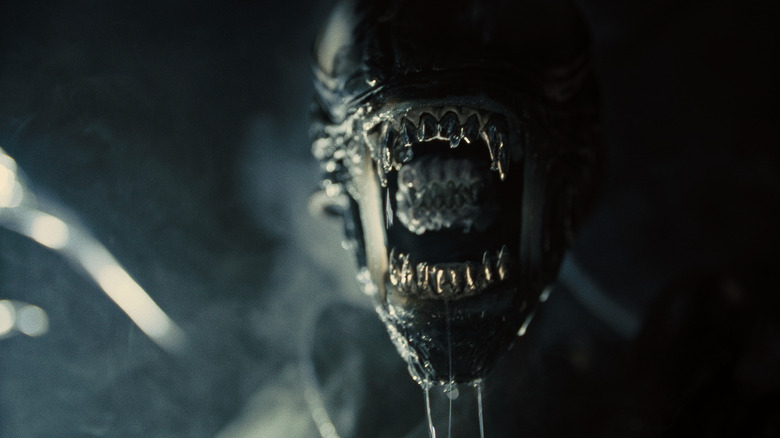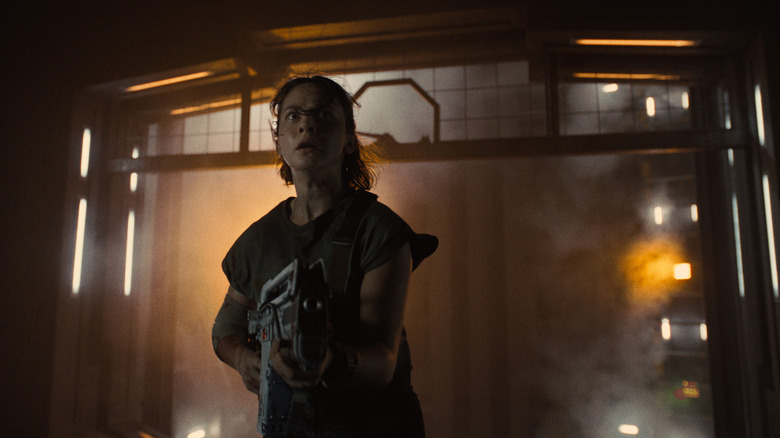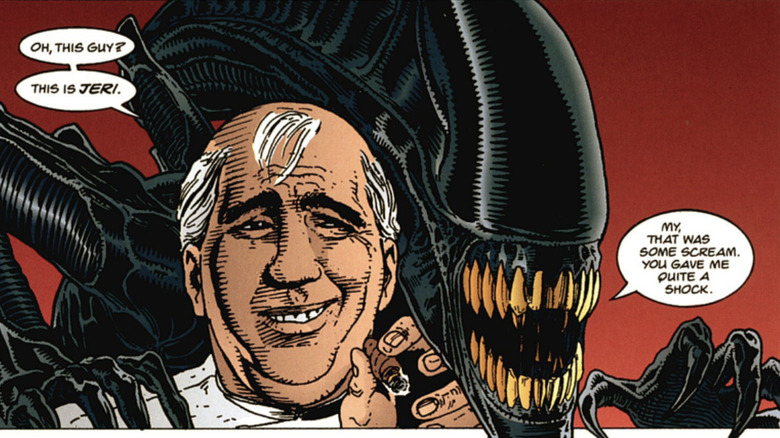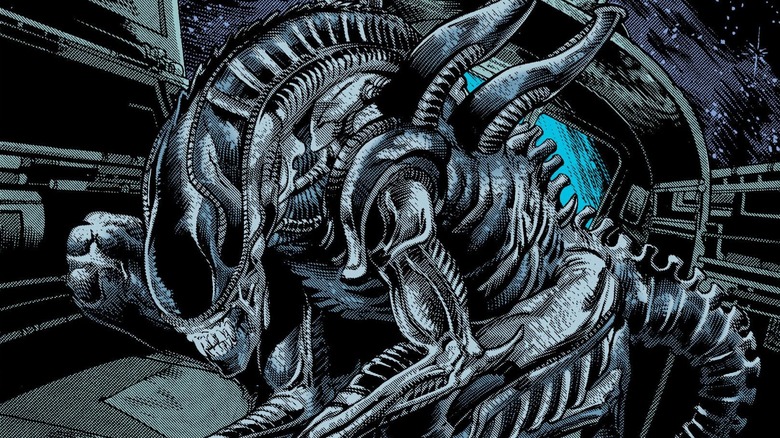This article contains light spoilers for “Alien: Romulus”.
Despite being around for 45 years, Xenomorph and the Alien franchise have never lost their unique quality. Rather than an endless barrage of franchise-wearing sequels, remakes, reboots and other trappings, as has been the case with many other great series, Alien has always been treated with a certain level of respect. The series is remarkably filmmaker-driven, with each successive director bringing their own sensibilities and interests to their installments without concern for a rigid narrative canon or house style. The Alien is a mutating, ever-surprising organism, and the franchise has been allowed to change with it.
This approach of putting the idea first has also been extended to the franchise’s ancillary material, be it novels like Aliens: Original Sin or video games like Alien: Isolation. This game in particular was originally cited as a major influence on the latest film adaptation of the xenomorph: Fede Alvarez’s Alien: Romulus. Although Alvarez has openly expressed his love for the video game and the Easter eggs in Romulus that pay homage to it, his film is by no means an adaptation of the game; so Rain (Cailee Spaeny) is not revealed to be Amanda Ripley.
Rather, “Romulus” is a deliberate hodgepodge of the entire “Alien” series to date, with either references or concrete connections to nearly every film in the series. It also, like its “Isolation” Easter eggs, incorporates some ancillary material. As a result, “Romulus” feels particularly like a big-screen version of the various Dark Horse Comics tie-in series from the late ’80s and ’90s. While none of these comics are strictly canon, they introduced some great concepts to the “Alien” story, and at least one of them, thankfully, shows up in “Romulus.”
Romulus is a comic-style sequel
The idea of licensed comic book adaptations, where characters from another medium find their way into comic strips and books, has been around almost as long as cinema has existed. In addition to famous literary characters like Sherlock Holmes and Tarzan, there were also newspaper strips adapted from Charlie Chaplin’s character the Tramp during World War I. In this tradition, most early comic book adaptations were understood as alternate adventures of the same screen characters you know and love; the Gold Key “Star Trek” comics, for example, featured more missions from Kirk, Spock, and Bones, the “Star Wars” comics published by Marvel in the late ’70s continued Luke, Han, and Leia’s mission to overthrow the Empire, and so on.
Initially, in a time before film franchises became commonplace, these comics and other companion material were the de facto sequels. However, as film sequels proved lucrative for studios, these stories were naturally taken out of canon, meaning that fan interest could wane as a result. To prevent this from happening, companion comics began to explore other characters or even create new ones so that their stories didn’t necessarily clash with the main canon of the films.
Thus was born the concept of the “sidequel”: stories that are not sequels in the strictest sense (i.e. they do not feature the protagonists from the “main plot”) but are nevertheless set at a specific point in the series’ timeline. Although there are now several examples of this in film franchises, comics have certainly helped popularize the concept. For example, “Alien: Romulus”, which is set between “Alien” and “Aliens” but contains elements or references from the prequels and sequels, seems very comic-inspired, as it is the style of storytelling that Dark Horse Comics tended to use during their heyday.
By imitating comics, Romulus can get creative while avoiding future traps
The Dark Horse Aliens series was not structured like most companion comics. Rather than a single ongoing series, the company’s publishers decided to publish a series of limited series and single issues, allowing maximum creativity from a variety of writers and artists. This plan actually gave rise to some wild ideas, most notably the idea of a synthetic xenomorph, Jeri, as seen in Aliens: Stronghold by John Arcudi and Doug Mahnke.
Although Dark Horse had planned its approach to Aliens early on, they couldn’t quite avoid the trap of canon and continuity. Their very first miniseries, titled simply Aliens and published from 1988 to 1989, was written by Mark Verheiden and illustrated by Mark A. Nelson and was about an adult Newt and an older Hicks from Aliens. The appearance of Ripley was held back in the first two Aliens miniseries by Verheiden and Nelson, only to have her make a triumphant appearance in their third and final installment, Aliens: Earth War. That third series was published in 1990, and two years later Alien 3 came out, revealing the deadly fates of all three characters. So Dark Horse went back and re-released those first three miniseries with the characters’ names changed (and Ripley’s presence became a synthetic version of the woman).
As of now, the Alien film series is not a complete cycle; there is no sequel to the events of Alien: Resurrection (although there were some in the comics and novels), and the fate of David, the synthetic from Alien: Covenant, is still uncertain. The new characters and environments of Romulus provide a path forward for this and possible future films until (or unless) someone comes along to pick up the thread of these other characters.
Romulus officially makes a concept from the comics canon
In both Alien and Aliens, Ripley (Sigourney Weaver) defeats the Xenomorph and the Alien Queen (respectively) by hurling them into the depths of space, an environment known to be inhospitable to most forms of organic life. However, as shown in Verheiden and Nelson’s first Aliens miniseries (later renamed Aliens: Book One and Aliens: Outbreak), the Xenomorph seems to have a natural immunity to such places and can survive in space indefinitely. It’s a terrifying plot twist that fits very well with the dark, nightmarish aspects of the creature, and upends what initially seemed like a clear victory at the end of those films.
In “Romulus,” the Weyland-Yutani Corporation goes to great lengths to recover the supposedly decaying corpse of the xenomorph that Ripley blasted into space on the rescue shuttle Narcissus, only to discover that it wasn’t quite dead after all. By the time Rain and her comrades enter the abandoned twin space station Romulus and Remus, this alien has already been defeated, but at a high cost: it has spilled its acidic innards and blasted a hole through much of the station. In addition, its DNA has been used by synthetic science officer Rook (Ian Holm and Daniel Betts) to conduct a series of experiments to unravel the mystery of their biology. This included genetically manipulating a new flock of facehuggers, causing a full-blown outbreak aboard the station.
Since Romulus is a film that, even more than Alien: Covenant, bridges the gaps between all of the Alien films (except for the AvP films, which are actual adaptations of Dark Horse Comics), it’s fitting that it takes at least one key concept from the comics and brings it into the films. Alien is alive in every way!
“Alien: Romulus” is playing in theaters everywhere.





